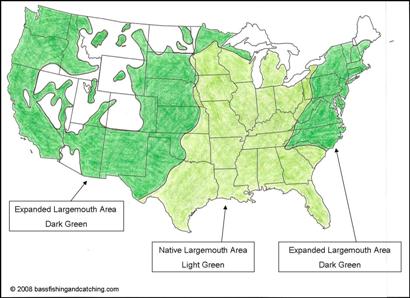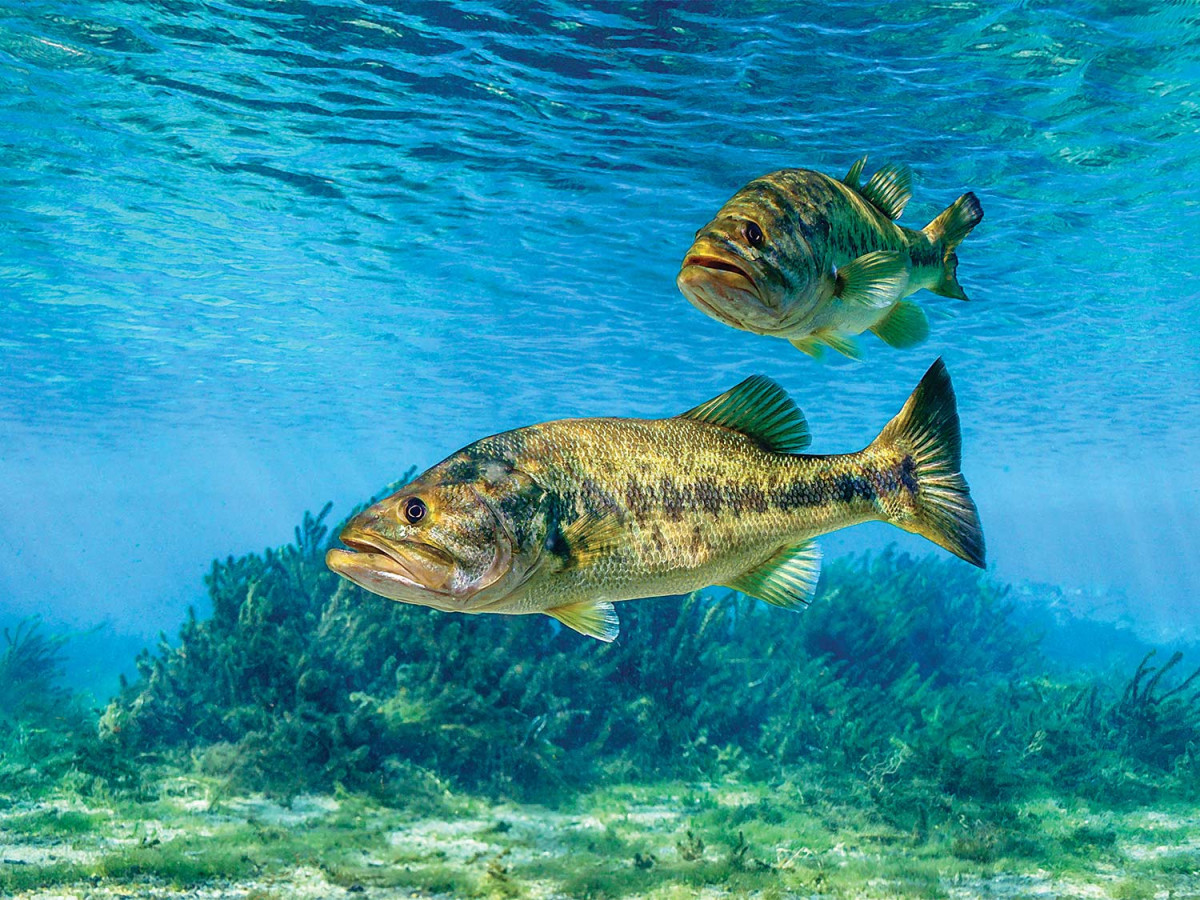There is nothing like the ferocious scene of a Largemouth Bass taking a lure or bait and jumping from shallow water, taking some air and shaking its head, letting you know there is a fight and it’s on but finding largemouth bass is a challenge of its own. What are largemouth bass habitat requirements?
Ideal largemouth Bass habitat is one with:
- Slow to non-flowing water
- Clear H2O
- Water temperature-65° to 90°F,
- Oxygen content-8-9ppm
- Vegetation-provides a place for food and cover if necessary
- Soft, shallow substrates
- Food available
- Found in rivers, lakes & ponds, though lakes provide the preferred habitat.
Largemouth Bass is opportunistic feeders preferring to lie in wait under a canopy of cover for the next meal to swim by, these fish possess heightened senses that are fine-tuned for efficiency.
Largemouth Bass Habitat Requirements
Largemouth habitats can be very diverse they can thrive or at least survive in any type of water as long as it’s warm 68 to 78 degrees in lakes or rivers and water less than 20 ft. deep with the right amount of dissolved oxygen available.
Largemouth bass inhabits clear, vegetated lakes, ponds, swamps, and the backwaters of pools, creeks, and rivers. Largemouth bass prefers spawning areas with a bottom of sand, mud, or gravel. Adult largemouth bass use submerged aquatic vegetation to ambush prey, and juvenile or young largemouth use aquatic weeds, tree limbs, or submerged logs or stumps to escape predation.
Dissolved oxygen
is also an important hydrological condition essential to largemouth bass habitat. Largemouth bass grows best in temperate to subtropical waters, with northern fish taking many more years to reach a given size than fish living in warmer southern waters. Dissolved Oxygen is measured in ppm or parts per million. Bass requires a higher DO than most game fish. Bass are stressed at DO levels below 5 ppm they do better in water that is near saturation levels of 8-9 ppm at 70 to 80 degrees.
Spawning
Largemouth bass will spawn in the springtime when water temperatures warm up to 59-75 degrees Fahrenheit. Male largemouth bass, when preparing to spawn will begin nest-building behavior by hollowing a circular nest in the lake bottom substrate to help protect eggs when they are fertilized.
This nest building attracts a female, who will release some of her eggs and spawn over the nest while the male releases his milt to fertilize the eggs as they fall into the nest. 
Largemouth bass normally does not feed during spawning or when the water temperature dips below 41 degrees Fahrenheit or above 98.6 degrees Fahrenheit. Characteristic category Physical Characteristics Characteristics Size & Shape Common length for largemouth bass is 16 inches, with the longest recorded specimen being 38.2 inches.
Females are periodic spawners, spawning with several males in different nests over a few days. The males will then guard the eggs and small transparent fry.
The fry will remain hidden in the nest substrate for several days until they become pigmented and disperse throughout the water to search for food after a few days post-hatch. They can drop 2000-7000 eggs per pound of body weight.
The fry remains in a school to protect themselves from predation and will begin feeding. The fry initially feeds on small copepod and cladoceran zooplankton. When the fry reaches 1.5 to 2 inches in length, they will begin to feed on insect larvae and become piscivorous.
What are the Best Live Baits for Bass Fishing?
Bass are predators. They’ll eat pretty much anything smaller than them in their natural environment, like:
Minnows
Shad
Crayfish & other crustaceans.
Worms-Nightcrawler
Small Bluegills & small Catfish called “stones.”
Frogs
Insects on the surface-Grasshopper-Crickets-Dragonflies
Yes-Bass will eat smaller Bass ………………………………………………………………………………………………….. Read more
Cover & Structure
Largemouth Bass love cover. It’s a place where they can hide from predators when they are young and a place where they can hide when older and more significant to ambush and attack prey for food.
The water Cover is on the top of a lake or stream, whereas the Structure is on the bottom of the lake. Largemouth Bass love any kind of cover, lily pads fallen trees, and docks make great natural habitats for Largemouth Bass. The one difference between most fish and a Largemouth Bass is all bets are off when it comes to its habitat and food. Largemouth Bass will chase his lunch anywhere and anytime.
Do Largemouth Bass Live in Brackish Water?
Yes-Largemouth Bass are found in all waters from fresh to brackish (a mix of fresh & saltwater) H2O that is tidal slow-moving rivers creeks, or streams. Largemouth, Striper & Channel Catfish like other Brackish fish species have a higher tolerance level of salinity & adapt to it where others can’t. .……………………………………………………………… Read more
How do you Catch Largemouth & Smallmouth Bass in the Fall?
You can Catch bass in the Fall if you:
- Understand the fall season transition period
- Identify baitfish & use a similar bait
- Look for grass that’s still green
- Cast baits on top of grass flats
- Find offshore structures/covers
- Find pockets
- Find cutouts on shorelines
- Use the right lure & location for temperature ..…………………………………………………………………………….. Read more
JimGalloway Author/Editor

